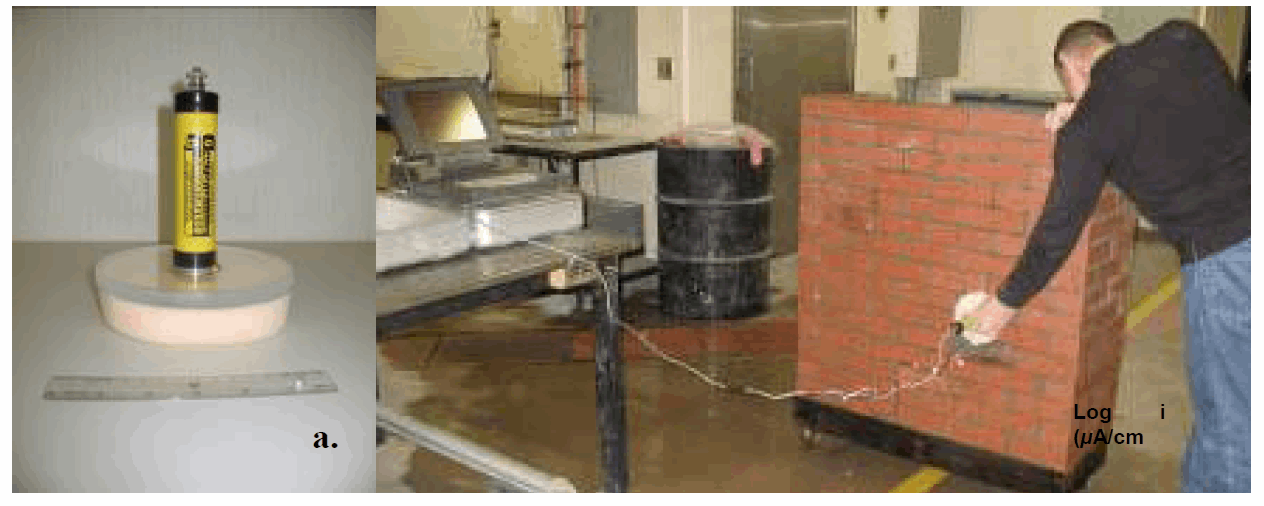M.D. Hagel1, S.L. Lissel2, G.R. Sturgeon3
- Engineer, Canadian Concrete Masonry Producers Assoc. Cochrane, Alberta, Canada, markdanielhagel@shaw.ca
- Professor, Schulich School of Engineering, University of Calgary, Calgary, Alberta, Canada, sllissel@ucalgary.ca 3 Senior Engineer, Canadian Concrete Masonry Producers Assoc. Cochrane, Alberta, Canada, bbstek@telus.net
ABSTRACT
The Linear Polarization Resistance (LPR) technique has been successfully used to obtain the instantaneous corrosion rates of steel reinforcement embedded in concrete. To date, this technique has not been used in brick veneer wall systems to obtain the corrosion rate of metal ties embedded in the mortar joints of the brick veneer where corrosion is typically found to occur first. Successful tests were conducted using the LPR technique, where the results obtained were used to validate an ISO corrosion rate model called ISOCORRAG. The LPR tests agreed well with the one-year ISOCORRAG predicted corrosion rates indicating that the ISOCORRAG formula is quite accurate at least in predicting the instantaneous corrosion rate within the first year. In one test, the corrosion rate obtained from the LPR test produced an instantaneous corrosion rate of 2.24 µm/year while ISOCORRAG predicted a rate of 2.57 µm/year. This ISOCORRAG model uses time of wetness TOW (hrs/year), sulphur dioxide concentration (µg/m3), and chloride deposition rates (mg/m2/day) to estimate the annual corrosion rate for atmospheric corrosion of flat metal coupons of various types. The service life model proposed is a stochastic model that randomizes the TOW, chloride, and sulphur deposition rate inputs on a monthly basis. TOW of the surrounding mortar was modeled using hygIRC-1D to obtain the temperature and humidity for several locations across Canada for four types of brick veneer wall systems. In Canada, the corrosion rate of ties in masonry veneer wall systems have not been correlated to external environmental parameters. Thus, a service life model that correlates the external environment to the tie life is an improvement to the current state-of-the-art model.
KEYWORDS: Tie Corrosion, Brick Veneer, Linear Polarization Resistance, Stochastic Corrosion, Service Life
C3-4



